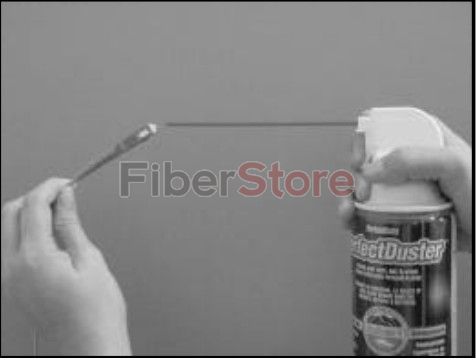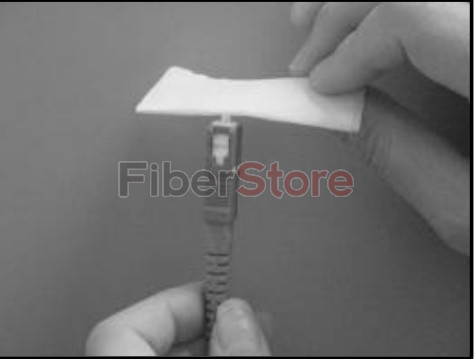How To Clean Fiber Optic Connectors
With the prosperity of Gigabit Ethernet and 10 Gigabit Ethernet, ensuring clean fiber optic connectors has become one of the most critical requirements for maintaining error-free communication in fiber optic communication systems. Studies have shown that a one micrometer dust particle can block up to one percent of the light and cause a 0.05 dB loss on a single-mode. A 9-micrometer speck is too small to view without a microscope, but a speck of this size can block a fiber core. This is why it’s so important to clean fiber connectors.
There are multiple ways to clean fiber optic connectors. Fiber optic cleaning kit on the market can be divided to four types based on the cleaning method.
• Dry cleaning: Optic cleaning without the use of any solvent.
• Wet cleaning: Optic cleaning with a solvent. Typically IPA (Isopropyl Alcohol).
• Non-Abrasive cleaning: Cleaning without abrasive material touching the fiber optic connector end face. Examples are air dusters or pressured solvent jet used in automated connector cleaners.
• Abrasive cleaning: The popular lint free wipes, reel based Cletop fiber connector cleaners and optic cleaning swabs such as the Cletop sticks are all abrasive cleaning types.
1. Blow the fiber surface with a stream of Clean Dry Air (the so called CDA), which will dislodge larger, loose particles. Keep in mind, don’t tip the can of the CDA while blowing. Because the liquid may be released contaminant on the surface of the fiber.
 2. Place 1-3 drops of spectroscopic grade methanol or isopropyl alcohol in the center of a lens tissue. Do not use Acetone as a cleaning solvent on the fiber optical surfaces. Besides, to ensure the purity of the methanol or alcohol, you should never insert the lens tissue or swabs into the liguid. 3. Hold the fiber by the connector. Place the wet portion of the lens tissue on the optical surface and slowly drag it across. At this step, don’t use lens paper to dry it because the dry lens paper is extremely abrasive.
2. Place 1-3 drops of spectroscopic grade methanol or isopropyl alcohol in the center of a lens tissue. Do not use Acetone as a cleaning solvent on the fiber optical surfaces. Besides, to ensure the purity of the methanol or alcohol, you should never insert the lens tissue or swabs into the liguid. 3. Hold the fiber by the connector. Place the wet portion of the lens tissue on the optical surface and slowly drag it across. At this step, don’t use lens paper to dry it because the dry lens paper is extremely abrasive.
 4. Examine the surface of the fiber under high density light using a magnifier, an optical loop, or a video inspection tool. If streaks or contaminants still remain, repeat the process using a fresh lens tissue. 5. Immediately install a protective cover over the end of the cable to avoid re-contamination or insert the fiber for immediate use.
4. Examine the surface of the fiber under high density light using a magnifier, an optical loop, or a video inspection tool. If streaks or contaminants still remain, repeat the process using a fresh lens tissue. 5. Immediately install a protective cover over the end of the cable to avoid re-contamination or insert the fiber for immediate use.
• Never touch the end face of an optical fiber connector
• Always Install dust caps on unplugged fiber connectors
• Store unused dust caps in a re-sealable bag to prevent dust accumulating
• Do not re-use optic cleaning swabs or lens paper (lint free wipes)
• Make sure all solvent residues are removed when using a wet cleaning
• Do not use alcohol around an open flame or spark
Fiberstore provides many kinds of fiber connector cleaners, such as the Cletop reel type cleaner, Cartridge-type cleaner, OAM connector cleaners, etc. All of them are brand new and manufactured following strict industrial standards. You can follow the instruction documents to conduct your fiber optic connector cleaning job with cleaning kit you need.